June 16, 2025 | 05:45 GMT +7
June 16, 2025 | 05:45 GMT +7
Hotline: 0913.378.918
June 16, 2025 | 05:45 GMT +7
Hotline: 0913.378.918
On the white sand hill, a closed-canopy earleaf acacia forest thrives to meet the sun. The sandy path through the forest appears colder and more even. Mr. Nguyen Lan, a Bac Ngu village official in Gia Ninh commune, Quang Ninh district, Quang Binh province, stated, "Ten years ago, during each monsoon season, Mr. Phung would purchase seedlings and bring them to the residence. He urged the residents to plant these saplings across the sand dunes in the village's rear.
The succession of tree deaths requires replanting. However, it is now forming a forest. Birds migrate to nesting sites. During the mushroom crop, the locals take turns foraging for melaleuca mushrooms in the forest. Some individuals acquire and sell large quantities. It's great to have a forest behind the village as it is now."
Every time they passed through the earleaf acacia forest, the Thach Bac villagers recalled the old tale of Mr. Phung sowing trees. It is said that the entire coastline behind the village of Thach Ban used to be a scorching desert area dozens of years ago.
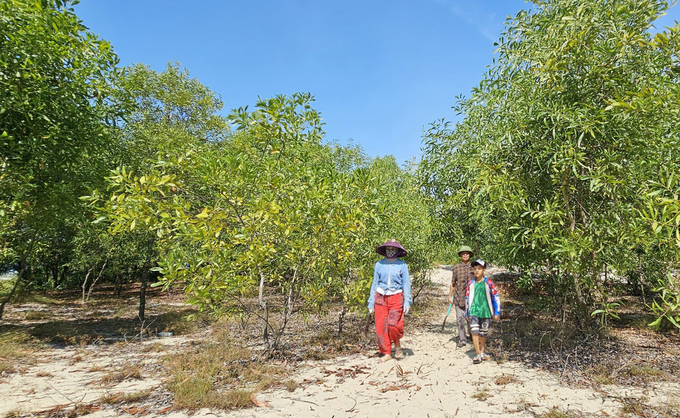
The burning sandbanks along the coast are now covered with the eye-catching green color of Melaleuca forests. Photo: Tran Duc.
Every time it rains, Mr. Phung transports seedlings to the sand dunes in his automobile. It rained severely while I was planting trees, but after a month of drought, thousands of acacia trees that had been planted in the sand perished and had to be replanted. The entire sand dune area was suddenly covered with a forest of acacia trees. During the monsoon season, mushroom gathering is permitted. When Mr. Phung brought the seedlings to plant, everyone assumed he was requesting something; however, he spent his own personal money to plant forests for the entire village.
Mr. Phung once purchased thousands of yellow-flowered Melaleuca seedlings in order to employ villagers to plant them on the sand dunes. The tree has not had time to take root after a few days of rain, and the sun is scorching. There was no precipitation for an entire month, despite the sun's lengthy duration. Thousands of seedlings continued to wilt in the heat. Everyone feels sorrowful upon seeing it. The following month, when it rained, tens of thousands of melaleuca trees on the sand dunes were desiccated, bowed, and devoid of sprouts.
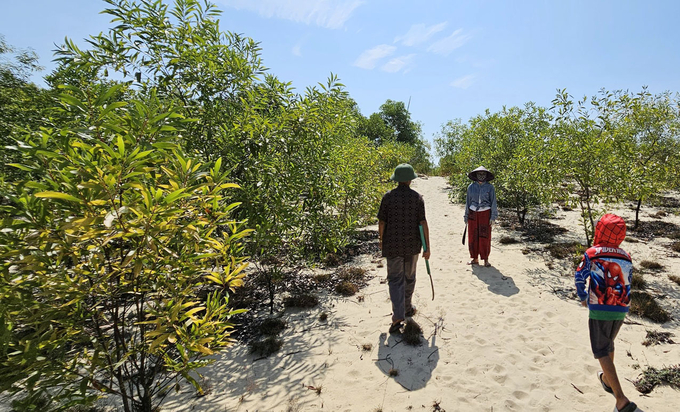
The forests have taken root on the white sand dunes. Photo: Tran Duc.
More experience results in more teachings. Mr. Nguyen Phung elects, in September of the lunar calendar, to purchase trees for planting after the monsoon season of the following year. Each time, only a few thousand trees are planted. Relatives contributed the hoe, the shovel, and transported the tree to the sand hill to assist Mr. Phung in planting the forest.
In a year of severe drought, the small, frail melaleuca trees were unable to withstand the intense heat of the sun, so their foliage kept turning yellow and withering. Mr. Phung went back to his birthplace and asked the adolescents to transport water from the creek at the foot of the sand hill. Each pair of individuals carries one package. He instructed the youngsters to carefully dig up and irrigate each root with a glass of cold water.
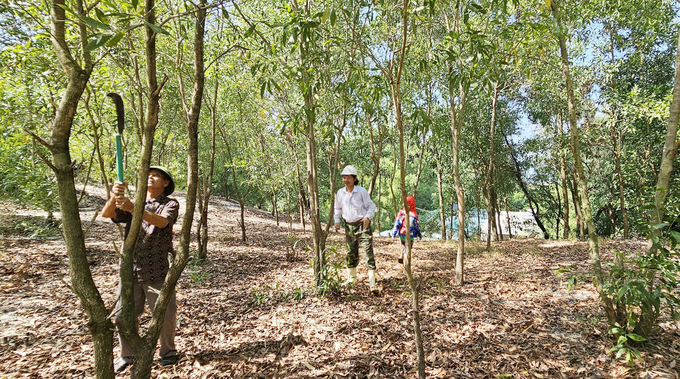
The thin melaleuca trees that support the poor sandy soil rise up. Photo: Tran Duc.
The first generation of Melaleuca trees have closed their canopies as if to prevent the later generations of trees from agitating.
Nearly 20 hectares of forest now cover the sand dunes behind the village, creating an aesthetically pleasing scene. A large honey bee nest was located one day dangling from a large cajuput tree limb. Everyone constructed torches, burned smoke, and extracted several flasks of high-quality honey from the honeycomb to share.
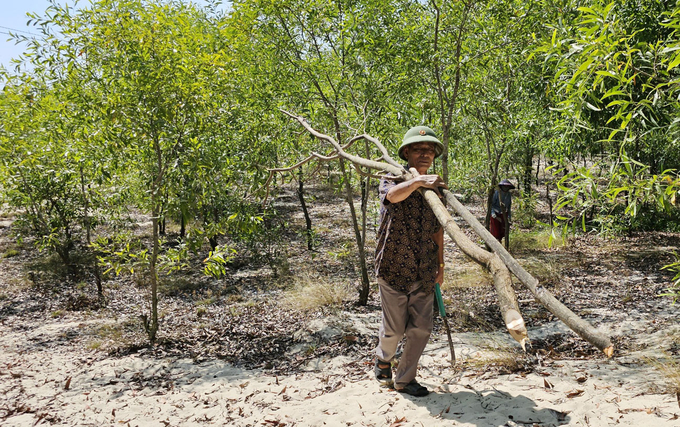
People need to be able to ask for pruning to make gourds and squash. Photo: Tran Duc.
In recent years, when October arrives and the first showers of the season add moisture to the melaleuca plant's dry foliage, the melaleuca mushroom season has expanded. From early morning, children aged seven and eight roused up and called on others to go to the cajuput forest to collect mushrooms. Children with their keen vision are the only ones who can gather up a large number of fungi. Mr. Nguyen Lanh's nephew had only been gone for about an hour when he returned with two kilograms of mushrooms and gave them to him.
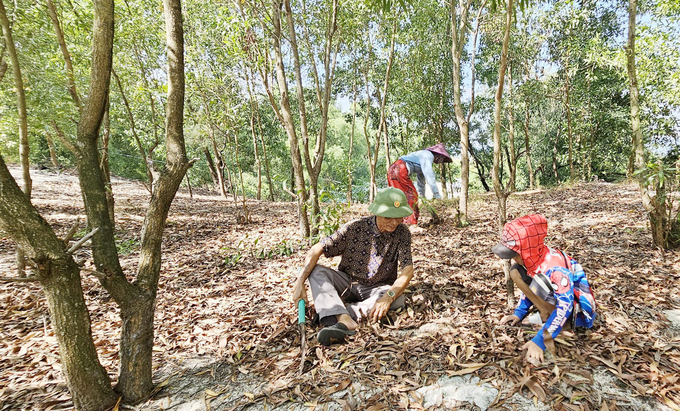
The people of Bac Ngu village now no longer have to endure sand flying into their homes every summer and are protected from wind and storms thanks to the forest. Photo: Tran Duc.
As a specialty dish, Melaleuca mushrooms are cleansed, boiled in boiling water, stir-fried with pork lard, and combined with a sprinkling of green sweet potatoes. The texture of the mushroom in the mouth was gritty, and the mixture of sweet, bitter, and fatty odors on the tip of the tongue was viscous.
Some individuals work diligently, gather up three times per day, acquire five to seven kilograms, and sell them for 50,000 VND per kilogram, earning several hundred thousand dong. It is practical both ways. Having learned that Mr. Phung frequently returned to his birthplace on weekends, the children also went mushroom hunting. Their parents chose ample mushrooms as gifts and reminded the next generation of Mr. Phung's efforts to become the forest's first mushroom cultivator.
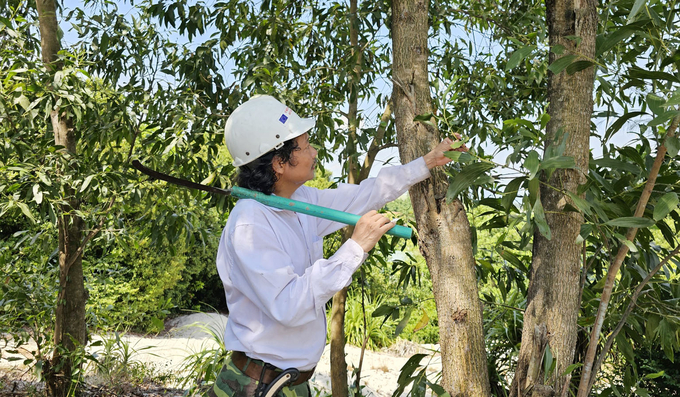
The forest is already green on the white sand hill, the result of Mr. Nguyen Phung's more than 10 years of afforestation. Photo: Tran Duc.
The Melaleuca forest annually sprouts and develops enormous branches. Mr. Phung should be contacted by those in need of bitter melon or green bean trellises so that he can prune the branches in the forest. The two-meter-long branches were pruned and returned to the villagers, who then encouraged one another to contribute to Mr. Phung's forest in exchange for excellent shade, more cool water streaming from the foot of the sand cave, and more delectable mushrooms in daily meals.
Translated by Linh Linh
![Turning wind and rain into action: [4] Bringing climate bulletins to remote and isolated areas](https://t.ex-cdn.com/nongnghiepmoitruong.vn/608w/files/linhnhp/2025/06/14/1152-z6704423696987_15fd32ffc26d590d204d520c9dac6786-nongnghiep-151141.jpg)
(VAN) The Vietnam Agriculture and Nature Newspaper interviewed Mr. Vu Thai Truong, Acting Head of Climate Change and Environment at UNDP Vietnam, to gain deeper insight into how climate bulletins are delivered to farmers.

(VAN) In Tien Giang, a high-tech shrimp farm has developed a distinctive energy-saving farming model that has yielded promising results.
![Turning wind and rain into action: [3] 300.000 farmers benefit from agro-climatic bulletins](https://t.ex-cdn.com/nongnghiepmoitruong.vn/608w/files/news/2025/06/12/e5a48259d6a262fc3bb3-nongnghiep-125122.jpg)
(VAN) The agro-climatic bulletin has become a valuable tool for farmers in the Mekong Delta. After more than five years of implementation, the initiative is gradually being expanded nationwide.
![Turning wind and rain into action: [2] Providing forecasts to the people](https://t.ex-cdn.com/nongnghiepmoitruong.vn/608w/files/news/2025/06/12/e5a48259d6a262fc3bb3-nongnghiep-103927.jpg)
(VAN) In addition to improving the quality of hydrometeorological forecasts, putting forecast bulletins into practical use is crucial for production and disaster prevention.
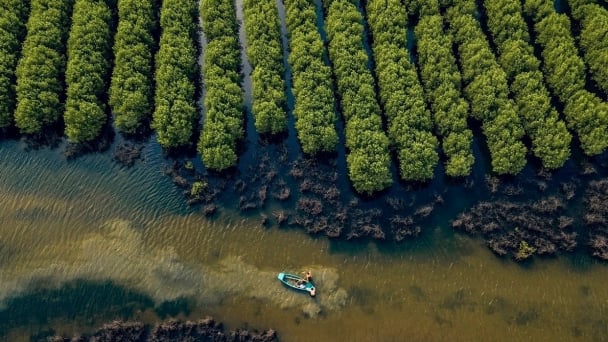
(VAN) Blue carbon is receiving attention for its rapid absorption capacity and vast potential. It represents a promising nature-based solution to respond to climate change.
/2025/06/11/3507-1-161904_583.jpg)
(VAN) Seagrass beds and coral reefs serve as 'cradles' that nurture life in the ocean depths, creating rich aquatic resources in Vietnamese waters.
![Turning wind and rain into action: [1] Forecasting for farmers](https://t.ex-cdn.com/nongnghiepmoitruong.vn/608w/files/news/2025/06/11/e5a48259d6a262fc3bb3-nongnghiep-111919.jpg)
(VAN) Weather is no longer just a matter of fate. Forecasts have now become an essential companion for farmers in every crop season.